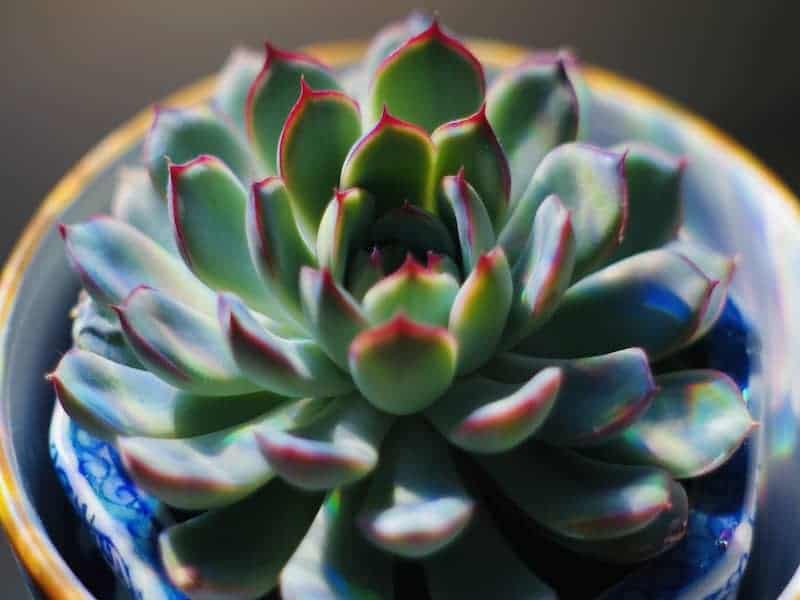
The agave parryi truncata is also known as the Artichoke Agave. It gets its name the ‘Artichoke Agave’ because it looks a lot like a very large artichoke, we will be referring to the agave parryi truncata as the Artichoke Agave for the purpose of this article.
Read through this post if you want to learn how to care for, propagate, and water this exotic succulent plant. By the end of this post, you will know everything there is to know about the Artichoke Agave succulent. Enjoy!
Jump to:
Description
| Name: | Agave Parryi Truncata |
| Soil: | Well aerated sandy soi |
| Blooming: | Summer |
| Light: | Full sun to partial shade |
| Water: | When the soil is completely dry |
| Propagation: | Cuttings, offsets and seeds |
The Artichoke Agave succulent is a low-maintenance succulent in the agave family. It can grow up to two feet tall, and up to three feet wide. This plant is a great choice for garden beds, borders, rock gardens, and more. It is versatile and striking; it will definitely make a statement in any arrangement.
It is blue-grey in color and grows in a tight rosette that spreads outwards. The Artichoke Agave has thick leaves that are hard and succulent.
You might see the Artichoke Agave succulent growing in the wild in New Mexico, Texas, and Arizona. These plants like to grow in warm and dry climates and they do not grow well in humid weather or frost.
Cultivars and Hybrids
The Artichoke Agave is a hybrid of E. Gibbiflora v. Metallica and A. gentryi. The Artichoke Agave is a cultivar of the agave parryi var. Truncata plant. There are many popular parryi varieties around. Here is a list of some you might recognize:
- Agave parryi var couesii.
- Agave parryi var huachucensis.
- Agave parryi var truncata.
Care
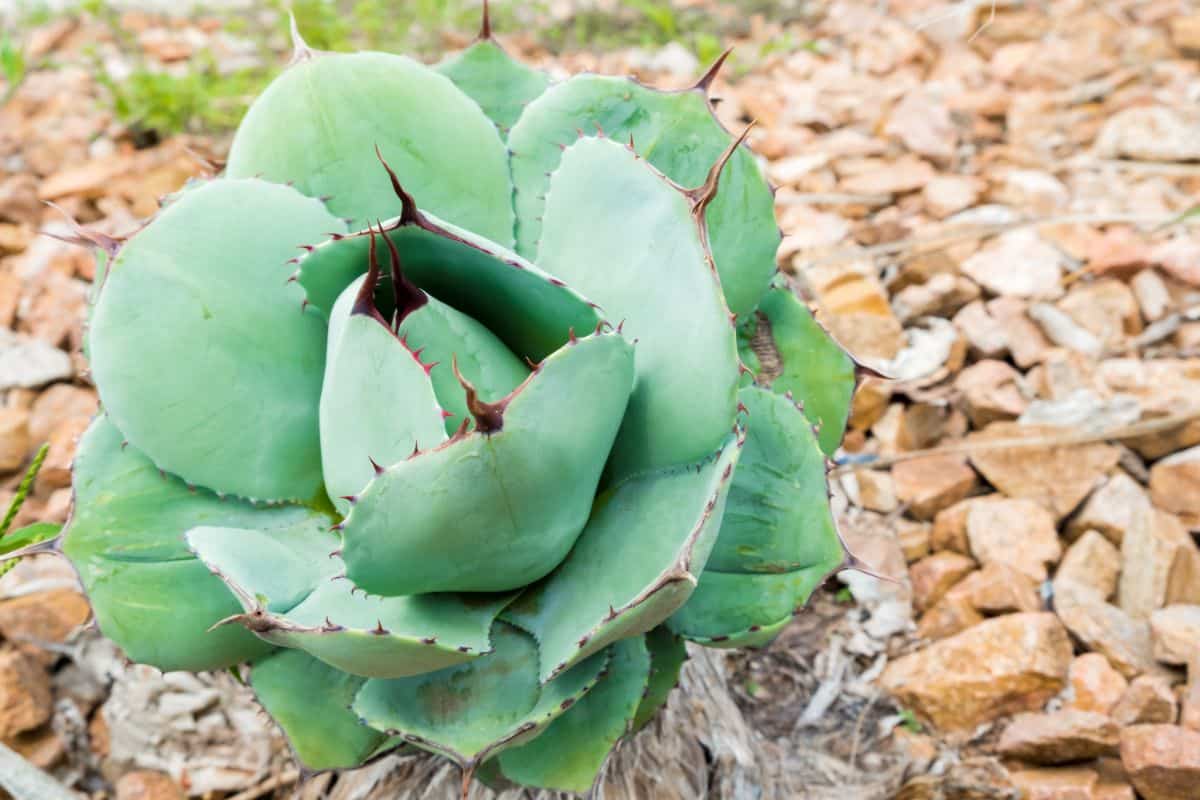
Buy it from:
Like most succulents, the Artichoke Agave is very easy to care for. A healthy and well-established adult plant will flower beautiful pale yellow flowers. It is important to follow the plant’s specific care needs as over fussing can lead to its deterioration.
A bit of neglect goes a long way when caring for the Artichoke Agave, and less is most certainly more. Take a look at the care tips and requirements below.
Light
These succulents are great gap filling plants. They are ideal for gardens that have a lot of space that needs filling with something attractive and unique.
When planting this succulent in your garden, you must make sure that they are planted in an area that gets at least six hours of full or partial sunlight. This can be a challenge for most gardeners as these sunny spots are not always the ideal locations for landscaping.
No products found.
In order to ensure your plant is always in the area of the garden with the most sunlight, you should plant the Artichoke Agave in buckets or tubs and move them around the garden.
If you plan on growing your succulent indoors, make sure it is always placed on or near a sunny windowsill that gets plenty of sunlight. House plants that don’t get enough light will begin to discolor and deteriorate.
Water
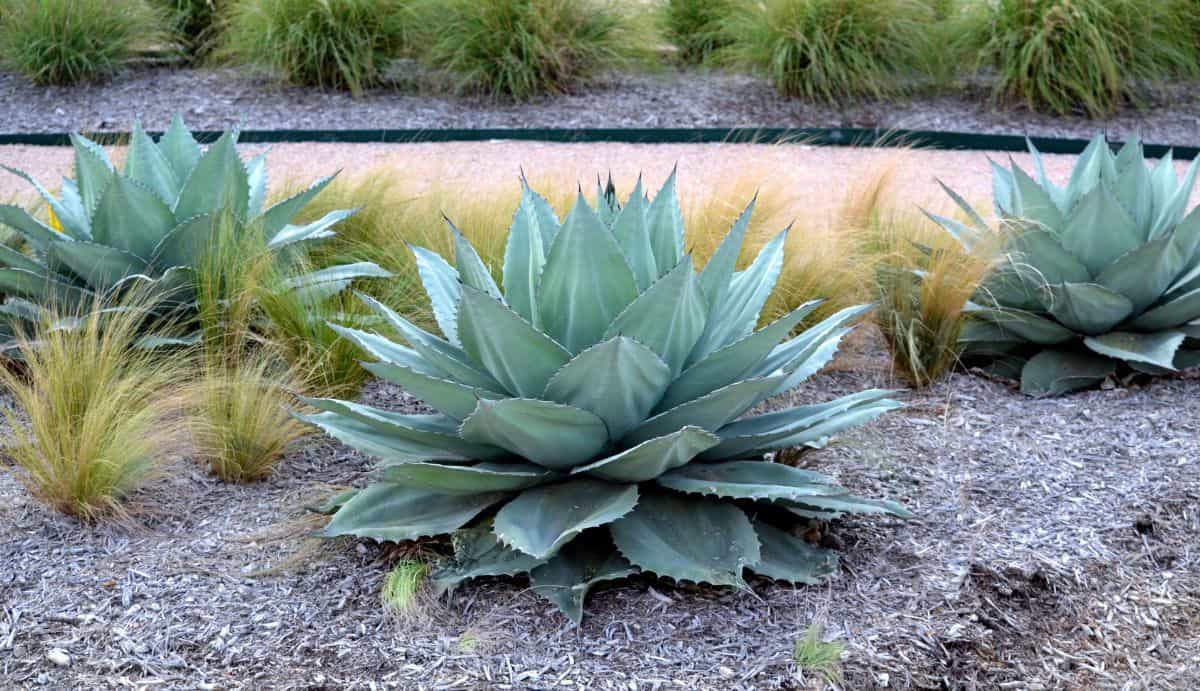
These plants are native to very hot and dry areas of the world. Because of this, established plants have developed the ability to tolerate drought.
Drought-tolerant plants should only be watered when the top two inches of soil is completely dry. Do not follow a watering schedule when caring for agave parryi truncata, instead, check the soil every morning and keep a diary of when you last watered your plant.
Temperature
Weather conditions similar to those found in USA hardiness zones 8a to 11b are ideal for growing the Artichoke Agave. Do not grow the Artichoke Agave plant in an area that gets colder than 10 degrees Fahrenheit.
If you live in a very cold location, you can grow the Artichoke Agave in a greenhouse. This is a great way to control the environmental conditions around the plant and to keep it safe during weather conditions that are not ideal.
Your Artichoke Agave can get sunburnt and dehydrated, so just because it is drought-tolerant, does not mean it won’t get damaged in extreme heat. You should use shade cloths to protect your succulents from the heat as their fleshy leaves never recover from the damages caused by sunburn.
Soil
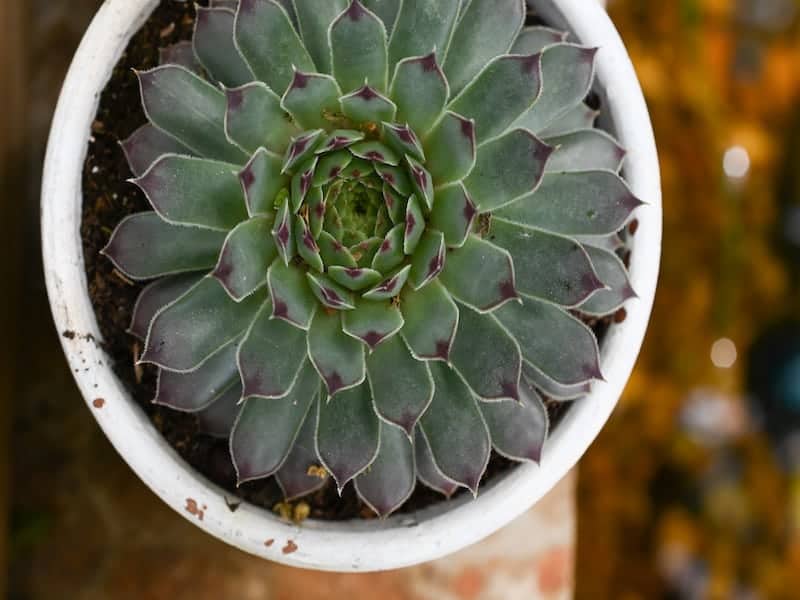
Sandy soil is the best soil for growing Artichoke Agave plants. Sandy, porous soil has great drainage and does not retain water unnecessarily.
Whenever you purchase a new succulent, it is vital that you re-pot the plant in soil that is appropriate for their specific plant species. Doing this will prevent the plant from suffocating or developing root rot.
Avoid planting this succulent directly in the ground, even if you amend the soil to suit it. This is because the pH levels and nutrients in the soil are not always appropriate for succulents.
If you want to plant your succulents in pots, make sure that the pots you choose have plenty of drainage holes. If you feel like the pots need better drainage, you can drill extra holes in the pots to make them suitable for succulents.
Propagation
The agave parryi truncata propagates well from offsets. Propagating this plant is very easy, and when it is done well by following the right steps, the propagated plants make great housewarming gifts for friends and family.
Seeds
You can grow agave parryi truncata from seedlings; however, due to its slow-growing nature, it is not recommended to do so. Plant the seeds in a soil mixture with brilliant drainage, and water the seeds frequently.
Keep the seed tray in a warm, dry place with plenty of sunlight. If you think the seeds are not getting enough sun, place the seeds under a fluorescent light.
Cuttings
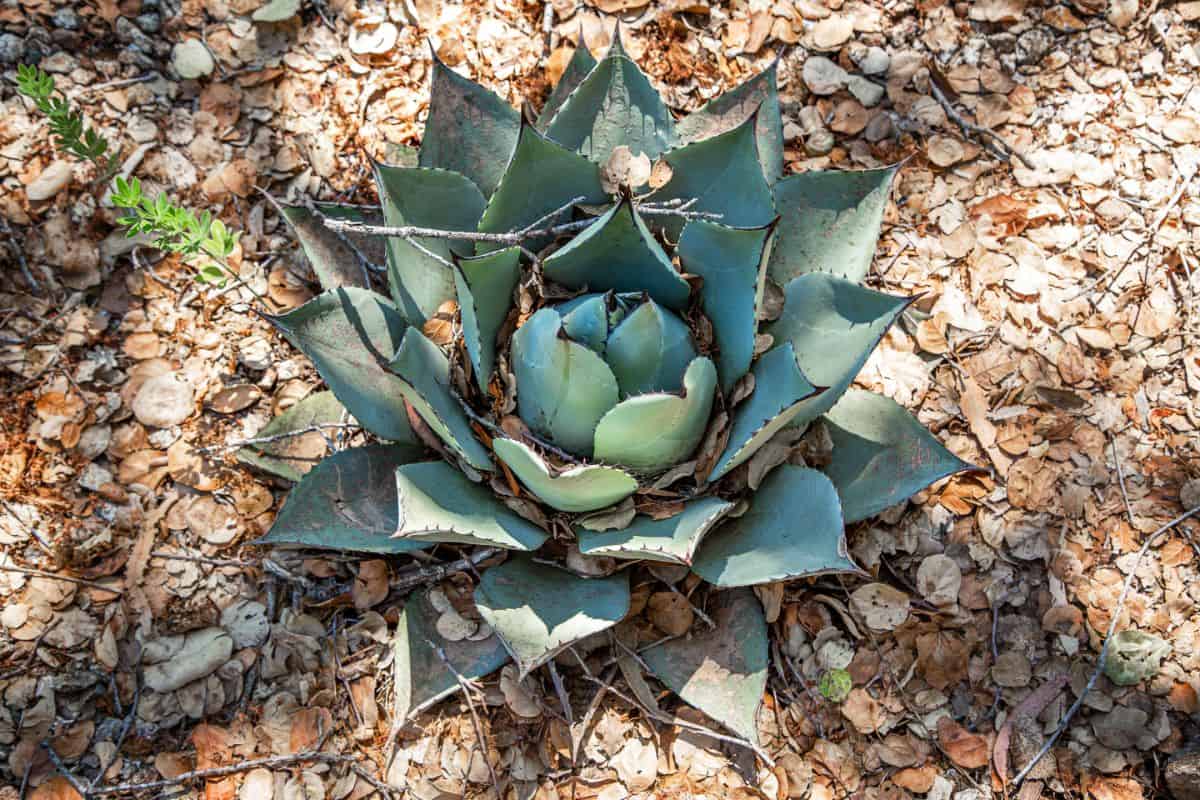
Propagating Artichoke Agave is rather difficult from cuttings, but it can be done. Follow the steps below if you want to give it a go:
- Look for a healthy leaf. Healthy leaves are thick, firm, and brightly colored.
- Using a sterile sharp knife, remove the healthy leaf from the main stem. Make sure that you remove as much of the leaf as possible, and if you can remove some of the main stems, too, then your cutting will have a better chance of growing healthy roots.
- Place the cutting on well-drained soil. Be sure to water the cutting eerie few days, or when the soil is completely dry.
Offsets
Look for offsets at the base of the plant. Artichoke Agave offsets look like small rosettes of baby plants growing at the base of the main plant. Follow these propagation steps if you want to try propagating Artichoke Agave from offsets:
- Look for a healthy offset at the base of the main plant.
- Using a sharp knife or a pair of scissors (make sure whatever you choose is sterile) remove the offset from the plant.
- Make sure that the offset has been removed whole.
- Leave the offset to dry out or callous over for at least three or four days.
- Once the offset has dried out, place it on well-drained sandy cactus potting soil and water it when the soil is completely dry.
- Once the plant is established, you can move it to a large pot or plant it in your garden.
Common Pests and Problems
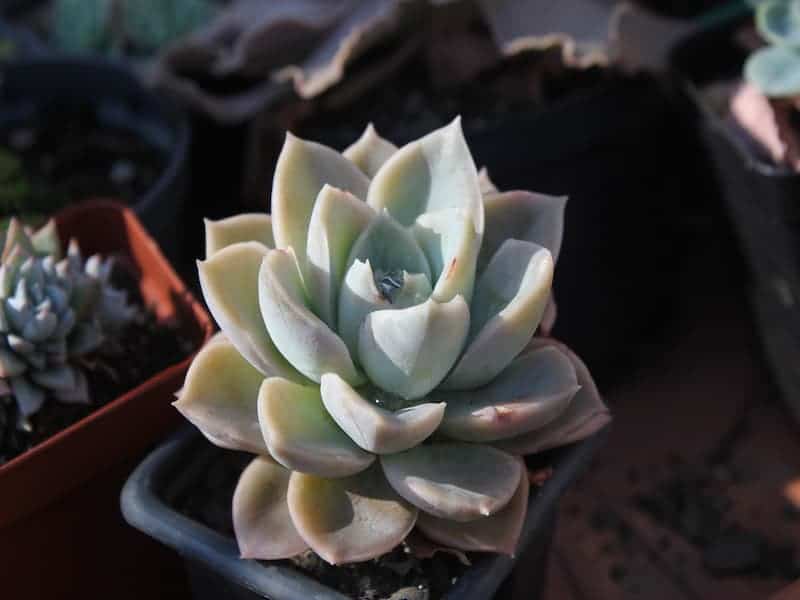
The Artichoke Agave plant attracts hummingbirds and other birds. This might be a nuisance if your succulent is planted outside; however, birds shouldn’t do much damage to your plant.
If you feel like the birds are damaging your succulent, you should build a bird feeder on the other side of the garden to distract the birds from your Artichoke Agave plant. There are many ways to deter birds from your succulent, but all in all, having hummingbirds in your garden creates a lovely atmosphere.
You will be pleased to know that agave parryi truncata is completely deer tolerant, this might be due to the thick spikes that grow from the end of the leaves that deter anyone or anything from walking too close to it.
You should know that sap from the Artichoke Agave plant is very harmful to pets and humans, as are the spikes or thorns growing from the leaves. You need to be very careful and precise where you want to plant your succulent so that children and pets do not come into contact with it.
Although the Artichoke Agave plant is pretty much disease resistant, it can develop root rot or powdery mildew if the plant is overwatered. Both of these conditions are hard to detect, and only become obvious when it is too late to save the plant.
Look out for discoloration such as black or brown leaves, or soggy stems or leaves. These are usually the first sign of root rot. Rotting plants can be saved if they are propagated in time. You need to look for a healthy part of the plant and attempt to propagate it by following the steps above.
We hope you found the information in this post helpful!
Sources:


